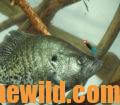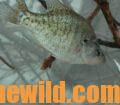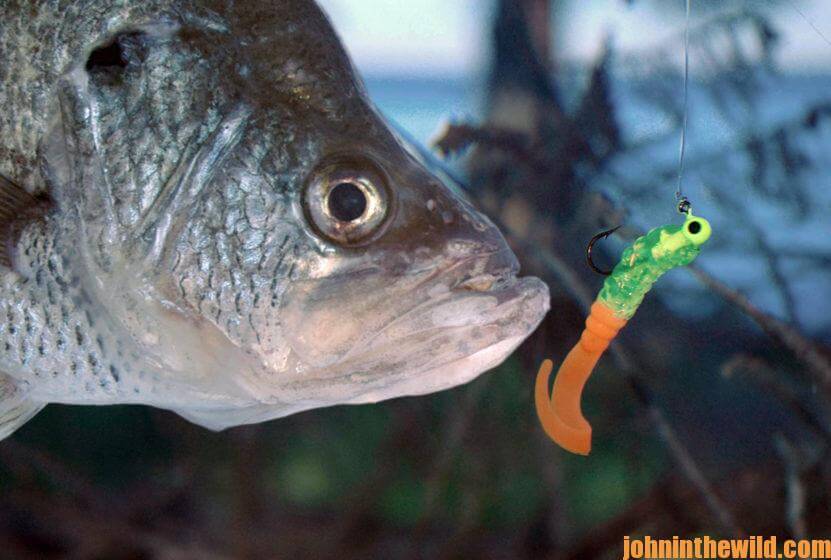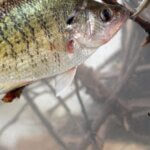Editor’s Note: During the end of March across much of the South, the weather and water will begin to heat-up. The crappie will move into the shallows near the bank to spawn. But, as often occurs at that time of year, one day when a friend of mine and I planned to fish for crappie, a late-winter cold front hit the lake. The crappie and the anglers who usually tried to catch them vanished, except for a few diehard fishermen who wouldn’t believe that spawning crappie would be affected by a severe weather change.
Once a reservoir is flood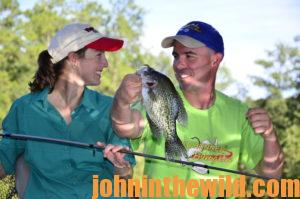 ed, besides roadbeds and bridges, many times there will be standing timber left in the lake. This standing timber may be on the edges of creek and river channels. When this situation occurs, the crappie often will suspend in this timber – particularly during the hot and the cold weather. Actually crappie may be on or near this type of cover at almost any time of the year, because this is where baitfish will hold. Also, crappie have vertical features to relate to, and the standing trees provide a current break.
ed, besides roadbeds and bridges, many times there will be standing timber left in the lake. This standing timber may be on the edges of creek and river channels. When this situation occurs, the crappie often will suspend in this timber – particularly during the hot and the cold weather. Actually crappie may be on or near this type of cover at almost any time of the year, because this is where baitfish will hold. Also, crappie have vertical features to relate to, and the standing trees provide a current break.
When you find the crappie in the timber, knowing exactly water depth the fish are holding in is the critical key to catching them. Many times the crappie will be holding in 12-15 feet of water beside standing timber, with a bottom at 40-50 feet. Once more a depth finder becomes a critical key to locating crappie in deep water.
When you find the fish, lowering either minnows or jigs to the crappie at the precise depth the fish are holding is the difference in catc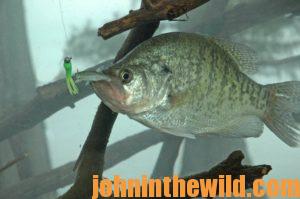 hing or not taking them. There are several ways to measure the length of line on either your rod or your pole, so that you have your bait at about the right depth to fish. If the crappie are holding in 12 feet of water, and you’re fishing with a 6-foot rod, lower your bait down to where it touches the end of the handle of your rod. Next, with your fingers, pinch the end of the line at the tip of the rod. Now pull the line from the tip of the rod to the butt of the rod. You’ve measured exactly 12 feet. Pointing your rod, so that the tip nearly touches the water means your bait will be in the proper depth to take crappie. When the crappie are holding in treetops, finding the fish on the depth finder and keeping the bait at the right depth for the fish to see and eat is important to catching these deep-water crappie.
hing or not taking them. There are several ways to measure the length of line on either your rod or your pole, so that you have your bait at about the right depth to fish. If the crappie are holding in 12 feet of water, and you’re fishing with a 6-foot rod, lower your bait down to where it touches the end of the handle of your rod. Next, with your fingers, pinch the end of the line at the tip of the rod. Now pull the line from the tip of the rod to the butt of the rod. You’ve measured exactly 12 feet. Pointing your rod, so that the tip nearly touches the water means your bait will be in the proper depth to take crappie. When the crappie are holding in treetops, finding the fish on the depth finder and keeping the bait at the right depth for the fish to see and eat is important to catching these deep-water crappie.
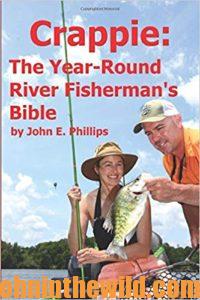 To learn more about crappie fishing, check out John E. Phillips’ book, “Crappie: The Year-Round River Fisherman’s Bible” at https://amzn.to/2mxWIt4 available in Kindle, print and for the Audible version at https://adbl.co/382m0SR.
To learn more about crappie fishing, check out John E. Phillips’ book, “Crappie: The Year-Round River Fisherman’s Bible” at https://amzn.to/2mxWIt4 available in Kindle, print and for the Audible version at https://adbl.co/382m0SR.
Tomorrow: How to Catch Crappie at Their Deepest – Even in the Summer

